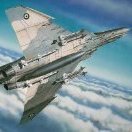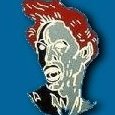Leaderboard
Popular Content
Showing content with the highest reputation since 05/01/2024 in all areas
-
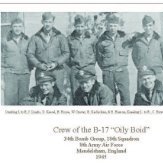
1:18 Scale B-17G Flying Fortress Forward Fuselage
TAG and 24 others reacted to patricksparks for a topic
A Little update, still moving ahead, lots of stuff to draw and print !!! Upper turret got the ammo boxes and and suit heater plug in box... Throttle quadrante painted and decororated.. LEFT side of the nose getting close... RIGHT SIDE Progessing FIRST CREW REPORTING, NAVIGATOR, have to put the oxygen hose back on...25 points -
F-18F Super Hornet VFA-2 BOUNTY HUNTERS Trumpeter 1:3224 points
-

Tamiya F-16 Aggressor, Kicked Up a Notch, May 5: Painting Begins
denders and 22 others reacted to chuck540z3 for a topic
May 5, 2024 Painting begins! Since this “Ghost” camo scheme is so finely detailed, it will obviously be the focal point of the finished model, so I want to do as good of a paint job as possible. I would not have even attempted to paint this scheme if it wasn’t for the Aero Mask set, which generally does a very good job, as you will see below. One detail that I painted separately is the front intake lip, because it’s a lot easier to paint off the model than when it’s installed. While the fit of this lip is quite good as is, it does have some raised edges here and there, so I sanded it down accordingly before painting. The front surface is covered with a radar absorbent coating similar to the radome, so I painted it with the same medium grey color and several pics I have of my subject flying, shows that it has the dark blue paint on the bottom in a rectangular shape. I then carefully glued it onto the intake, trying to be careful to not have any glue ooze out and make a mess of the paint. The fit is really good after my prior sanding adjustments. I can now mask off the painted edges and the entire intake inside. I usually don’t use a paint primer, since the enamels and lacquers I use adhere to the plastic quite well without one. For this snow-white model which is hard to see flaws, however, I sprayed on a few thin coats of Mr. Metal Primer on the metal reinforcement plates and Mr. Surfacer 1200 on everything. A few blemishes popped out here and there, which were easily repaired. The “Box Beams” on the sides behind the wings have Radar Absorbent Material (RAM) on them and are not painted in the camo colors. These were painted with FS36270 Haze Grey as per the Aero Mask instructions, which is the same color as the missile rails and pylons. I also painted the Jet Fuel Starter (JFS) door with Alclad Stainless Steel, then masked it off. For my first camo paint task, I decided to start on the canopy to get it finished and out of the way. Other than the canopy latches, the bottom of the canopy is fairly void of detail, although it is missing the handles that are on either side. Thankfully the Aires cockpit set came with a set, which I thickened with thin CA glue before gluing them on, then painted the bottom flat black. The seam line on the canopy was removed in the usual way, with fine sandpaper and Tamiya polishing compounds. My subject has the tinted canopy, but the rear glass is clear. I also painted the interior of the canopy glass, which is easier to do without the frame attached, but masked off the sides where the two parts are glued together. Glued together, again being careful to not let any glue ooze out and harm the clear parts. The Aero Mask instructions call for the paint colors as shown below. I was surprised that they indicate the color used mostly on the bottom of the jet is FS36628 Light Arctic Grey, because I always thought it was White. More on that later. While we all have our favorite paints, I really like the MRP line which is tough to buy in Canada, due to no Canadian suppliers and our ridiculous ban on paints being mailed across the border. I get paint mailed to me all the time from Canadian suppliers, but if it comes from any other country, it’s against postal regulations. Stupid. In any case, this paint is perfect for the task at hand, because it usually covers well with thin coats and dries fast. The only color that I don’t like is MRP-004 White, which needs as many as 5-8 thin coats to cover. After masking off the canopy inside and out, I painted it with the light blue, FS35450, then applied the Aero Mask subsets #7 and 9, using pics I have of the real jet(s) to position them. This was where I discovered the following: · You need to paint in light coats and not allow the paint to get wet, which can wick under the vinyl masks down panel lines, etc. · The airbrush should always be positioned 90 degrees to the surface and not at an angle · Keep paint buildup to a minimum, to minimize raised edges · There are at least 3 F-16’s painted in this Ghost scheme, with the camo pattern generally the same · There are lots of subtle differences between each jet, where the camo pattern varies, so small changes will not be noticeable · While this Aero Mask set is for my subject, 84-1220, some of the patterns apply only to the other Ghost jets, 86-0299 and 84-1301 · There are a few places where the Aero Masks are just plain “wrong” for all 3 jets, which I will show below · It’s probably best to take what the paint masks create and just live with it. Unless you have pics of the real deal beside you, you probably won’t notice any errors · The painting instructions are very hard to understand, so I will create my own which you may want to follow · The vinyl paint masks are excellent The camo pattern of the whole jet is the mirror image of the other side. After painting dark blue, FS35109, and removing the masks. The paint edges are nice and crisp, with no appreciable raised edges. I’m leaving the masks on the clear canopy, since I will be spraying a gloss clear coat for decals later. Here is what the vinyl masks look like, with a guide for each set. They are very sturdy and fairly easy to position. Unlike the painting instructions, the mask guide is easy to follow. I decided to do the tail section next, which has a very curious difference from the rest of the jet. On the port side- and only on this side, the light grey is used, which is the only place it’s found on the upper surface. This light color is masked off with masks “A” and “B”, while the rest of the masks are numbered. The light blue is then painted on both sides, then the masks are removed. Masks #17 to 19B are then applied. Make sure to burnish down all the edges to prevent leakage. The other side, which is a mirror image. You need to then use masking tape to cover any gaps. The dark blue is then sprayed on, in light coats to prevent paint from leaking underneath the masks. The masks were removed after the paint dried, then the entire tail was masked off to apply the leading-edge film, which I painted with the radome color. Note the little blue rectangle within the first coat of light grey paint, which shouldn’t be there. While the color looks white in this photograph, it's definitely light grey in person. While I don’t have a closeup pic of this side of the tail on my subject, I do of 86-0299. Here you can see the subtle differences, but nothing should be in the light color. The other side. As mentioned above, I was surprised that the instructions called for Light Arctic Grey for the side of the tail, but also the entire underside of this jet. Checking the pics I took at Nellis AFB in November 2022, I think the instructions are wrong. While the tail does look light grey the underside is definitely white. My subject flying, which is a bit harder to see the differences. After looking at this pic, my mind is made up. I’m painting the underside white instead of light grey! Well that’s it for now. My next update will likely be painting the entire model and I’m really glad I started on a few smaller items before attacking this big and complex paint scheme, which should be a lot easier as a result. Cheers, Chuck23 points -
Howdy ladies Thanks for all your kind comments Hi Paul - yes, it's P38 car body filler - the God of fillers in my opinion So, after a 3 week break in Bali things have been a bit slow on the Sea Fury - but some stuff has been done.. I made the gear legs by integrating brass and 3D. I assembled it all before I left and left it standing on my bench. By the time I got back, the wheel mount struts had completely warped under load proving what I suspected that the elegoo 8k resin I use just wasn't up to structural work. Having read up about strong ABS alternatives I went with eSun ABS like resin and printed the parts in that instead.. ..the great thing about 3D is you can get absolutely correct geometry and incorporate all the detail found on the original.. after clean up & prime it worked well and they seem strong enough but I am still testing load - if they fail, the lower wheel mount will be made in brass.. ..also hopping about all over the place, I made the basic gear bay roof out of litho & plastic strut.. and a centre rib in 3D with all the little valves & fittings.. ..there is a TON of pipework in the bay.. ..also made up the wingtips and finished the wing cores.. ..another experiment was trying the IP in 3D - I usually make all this in PE, but as my supplier has a 5 week wait, I thought I would give it a go. The panel is 0.3mm thick so I thought there was little chance of success without warping, but again, I stuck lucky & it came out alright.. ..time to get this cockpit worked up and properly sorted - I have a good basis now.. ..it's a fun build - I am enjoying it TTFN Peter23 points
-
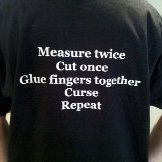
1:32 Douglas A-26 Invader from Trumpeter/Hobbyboss?
The Phantom and 22 others reacted to Uncle Les for a topic
Here's mine after I went to town on it replacing engines, relocating wings, adding and subtracting parts and basically spending a lot of time and money.23 points -
1/32 Trumpeter P-51B Mustang with Aerocraft corrections
Ralph-D and 22 others reacted to Tolga ULGUR for a topic
A small update. Btw, one of the trumpy's main landing gear legs broke meaninglessly. I have to slow down until the spare part arrives. Tamiya's flaps are ready23 points -

TBD-1 Devastator VT-3 Midway Indoor Pics
blackbetty and 20 others reacted to Rod Bettencourt for a topic
Hello all, I recently Took some indoor pics of the TBD on a Carrier base I won at a contest with this build. I really always wanted to model this shot. The base was designed by Tony Quartaro. Hope you like. Rod21 points -
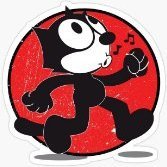
Trumpeter MIG-15
R Palimaka and 19 others reacted to Mastergandalf for a topic
Hello modeling friends, first of all I have to praise the forum, the members of the forum are the world's best forum for 1/32 model building freaks :-) there are great models to see almost every day and that is really mega. I am happy to deliver my first rollout in these holy halls. I'm almost 50 years old from Austria and I've been modeling for 15 years, thanks to my 3 children, twins girls and a straggler... I have only had a massive passion for collecting for the last 10 years..... You know how it is when you just open a box and in your mind they are all built. Since I wanted to build something nice and finished again after a very long time, I decided to build a Trumpeter MIG-15 in royal scale as a practice model :-) The building time took months anyway and the decal version was not what I had originally planned, the white fuselage lettering number 4115 was simply missing. Yes, what can I say before I throw it in the bin......3 hours before completion - yes, sometimes you have to give in to your original ideas and just have fun building. So long enough patter. Kit is made out of the box with Alcad and Tamiya Colors. I am curious what you say feedback positive and critical allowed and desired, have fun with it best Regards Rainer Sorry my first post Photos can be viewed here https://postimg.cc/gallery/Wp62gSX20 points -
Hi all, another project saved from the shelf of doom. after years of standby I completed this beautiful Hasegawa kit, modified to become a D-1 for medical evacuation. I wasn't satisfied with the rendering of the diorama terrain, in particular the puddle. I finally gave up, and here it is. here the link to its long term wip: cheers, Paolo.20 points
-
Here we go again...
Rocat and 19 others reacted to David Hansen for a topic
El Corsair Grande has entered sort of a rolling, progressive. "Troubleshoot as you prime" stage... The model first received a once over with Yellow Zinc Chromate, done by taking Tamiya White Surface Primer, decanting it, and tinting it slightly with XF-4 Yellow Green. Next, i masked off the fabric covered parts of the wings and sprayed them with the White Primer, this time slightly tinted with Deck Tan. As is my custom, i slotted the tail feathers, Flaps and Ailerons in place just to make the model look more interesting. Probably some more troubleshooting to go before i begin painting the underside... -d-20 points -
*** Finished*** 1/32 Trumpeter P-47D-22 "Kansas Tornado"
Collin and 19 others reacted to Tolga ULGUR for a topic
Finito..... I will post more and probably better pictures on RFI section later. Thanks for looking20 points -
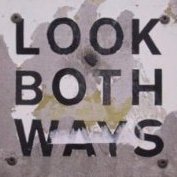
1/32 Revell-AIMS Spitfire PR Mk.XI
Troy Molitor and 17 others reacted to mc65 for a topic
hi all, I had this kit in the attic for a while, as usual accompanied, over time, by various aftermarket sets and documentary material. looking for inspiration here and there I found my ideal subject on YouTube: and, encouraged by the availability of the AIMS modification set, I decided to launch myself into the reproduction of the PA944 kite, having dedicated decals printed, together with others as part of a larger and long-term project. In fact, the PA 944, although well documented by the film and several photos that portray it in different phases of its operational life, was not considered by any decal manufacturer, at least in 1/32 scale. my intention is to complete the model with the insignia documented before September 1944, when it landed on its belly, but in any case after the invasion stripes had been partially covered. and here we are. a healthy, honest 2014 Revell kit, my bread! accompanied by a good amount of resin from the AIMS set, complete not only with the optional air intake, but also with several cameras, complete tail with retractable wheel, fuel pump bumps, oxygen cylinders, dedicated control panels for the cockpit and detailed instructions. Furthermore, John is always very kind and available to help with any further information. well, here we go, I'd say! you can start from the cockpit, from the installation of the cameras in the fuselage, or from the wing. I started from the latter, calmly... first I need to eliminate the weapons and the related bumps and spent cartridge ejection holes. a little job to do without haste, and with the right tools. wanting to preserve close details. on the belly things are decidedly simpler: and while I was here with scalpel and saw in hand, I also made room for the resin landing gear compartments. the rendering of the external surfaces is perhaps a little heavy, like riveting, but overall I like it, and the fit seems more than decent. well done Revell! while that of the particular nose of the PR shows some shrinkage problems: a good 2mm is missing in length! since it seems like a problem that can be solved without inconveniencing John, the least worst thing I can think of to do is this: separate the nose into at least two parts, and try to adapt it to the Revell fuselage, adding after material to rejoin the two nose's parts. sequitur... cheers, Paolo18 points -

Revell 1/32 F/A 18 F Super Hornet
phasephantomphixer and 17 others reacted to chrish for a topic
Jumping around in the assembly with no specific course in mind... I filled and sanded smooth some ejector pin marks that will likely never be seen anyway; I've cut into the old style ECS vents and test fitted the quickboost examples. I screwed up on the first cut (nothing unusual there) and ended up with a gap, fixable and I can still cut into the kits new style ECS vents if necessary to fit the resin parts. Possibly a dumb idea fitting upgrades to the kit at this early stage but, I've never been accused of being smart and the other one cut and test fitted I've got a coat of white Tamiya flat white for primer then a 50;50; mix of Tamiya flat and gloss whites for the gear bays, framing and intake ducting Alclad aluminum, steel, dark aluminum and burnt iron for the turbines and exhaust The fun continues Thanks for looking18 points -

1:32 Douglas A-26 Invader from Trumpeter/Hobbyboss?
The Phantom and 16 others reacted to Uncle Les for a topic
I'm putting something a little more comprehensive on my webpage - meanwhile here's several pics that tell the story:17 points -

F104 G Starfighter USAF
spyrosjzmichos and 16 others reacted to F`s are my favs for a topic
A small progress... I guess I leave the sanding/polishing for the end, cause it makes a huuuuge mess and needs a lot of cleaning.17 points -
16 points
-
Thank you Richard, Kev, Iain, Jaro and Mike. Well, the Yak 9 is almost finished. I gave the whole model a coat of gloss varnish. I did some very “light” chipping on the wing roots and fuselage. The photos show a plane with little wear and I tried to reproduce this. The same goes for the engine exhaust stains, which are barely visible. At first I wanted to show the aluminum paint, but I changed my mind and settled for a chipping with light gray pencils for all the upper parts of the plane. The photos were taken during the summer of 1944, and I preferred to reproduce a general dusting with light brown wash in the structural lines and on the parts of the plane in contact with the mechanics and pilots. After weathering, I fixed these effects with 2 different varnishes to respect and highlight the Yak's multi-material construction: -the metal parts of the aircraft (spinner/engine section down to the cockpit, the fixed part of the vertical stab and horizontal stab, central part of the underside of the wing, 3 hatches on the aft fuselage) with a semi-matt varnish. -wood and canvas parts (all control surfaces, top of wings, underside of wings, rear fuselage) with matt varnish. The overall effect is convincing, even if it's difficult to see on the photos.16 points
-
I took to heed warnings about sanding all the joining seams to square and work is continuing. The gear bay assembly is about the most complicated, other than perhaps Italeri's F-35 that I've seen but, fit was pretty good overall. A little bland for detail I think but still not bad The instructions suggest cutting off the molded on hinges for the inboard gear bay walls, to be re-glued once the lower fuselage is attached to the intake plenums I wanted to try something a little different, I taped the inboard walls to the lower fuselage and kind of slid them in with the lower 1/2 as an all in one type thing As well, work has commenced on filling and sanding the seams Thanks for looking16 points
-
1/32 Eduard (Hasegawa) P-40N Warhawk "Klawin Kitten"
Azgaron and 15 others reacted to Tolga ULGUR for a topic
Some progress after a short break Ready for painting16 points -
I do seem to gravitate to tough builds yes I wasn't too thrilled with the sink mark running full circumference around the Revell tail pipe. I remembered I had an ancient Hasegawa kit collecting dust in the basement so with caliper in hand I did a quick measurement and decided the Hasegawa pipes were close enough for an organ donation The Revell part in light gray and the Hasegawa kit coming in under the knife Thats a hand painted 410 Cougars from waaaay back with the Hasegawa part cut off it was tried for fit to the tail pipes and found to be fairly close, enough to offer some optimism at least and also test fitted to the airframe which was also encouraging; and that's a s far as I got tonight, thanks for looking16 points
-
Tamiya 1/32 F-16AM "X-Tiger"
TankBuster and 14 others reacted to Zola25 for a topic
Hi All Well, I had some yellow left over from my F-4EJ Kai build and thought there was no better way to use it than get moving on the Belgian Airforce F-16AM X-Tiger build - it is the 50th anniversary of the F-16 After all (and mine too) so building F-16´s all year long seems appropriate. There are a few amazing build threads on the Tamiya F-16 kits at the moment so if you want to see how to put this kit together you should have a look at those. I have used most of the great tips and tricks provided in those - In this thread I will just show the paint progress. I have used quite a number of add-on parts such as the Aires Wheel Bay and Cockpit. PWMP Tail conversion and sensors. Numerous weapons from Reskit and Masking set & Decals from Model Maker Decals.. (same company that brought us the Venom Viper Demo set) Its a pretty complex masking job with layers of masks sitting on top of each other. This is just asking for paint seeping under the masks and I decided early on I would just accept spending a fair bit of time repairing the damages than trying to prevent them entirely. In my experience it cannot be avoided when using vinyl masks in 3 layers. The underside was especially troublesome having to cut out the areas for the wheel bays. I wish the masking set would have come with separate masks for these parts and corresponding cut-out parts for the open areas left behind. All in all I am really happy at this stage.. When you unmask a model like this it is wise to remove the masks carefully to be able to re-use them when fixing areas. Especially with highly complex shapes like on the X-Tiger. The black shapes are symmetrical on either side so special care and attention has to be taken to make sure they are placed exactly the same. The eye is just drawn to any asymmetrical or out of place lines and they become very obvious. All paints are MRP in painting order 1.Yellow -> 2.Black -> 3.Grey The images below are straight after un-masking so there are a lot of smaller issues to fix.15 points -
Ok folks - shirts are available to order as of now. The price is $23.23 USD for standard sizes, and $30.33 USD for extended and tall sizes, plus shipping. The prices are based on us ordering 40 shirts, so if we don't reach that goal, I will be on the hook for the difference, so help me out!! Follow this link - https://www.customink.com/g/mvm0-00cv-7f0w - and you can choose your size and pay directly, and it will be shipped directly to you by late June. The order is open until May 31, so please order by then. In order to keep it as simple as possible, they are all black, Gildan Ultra Cotton, nice quality shirts. I ordered a 2XLT, and with shipping it was about 45 bucks, so not the cheapest in the world, but I had to do it this way to avoid spending a ton of time I don't have to do more custom options, sorry. If you have any issues ordering, please let me know, and I'll try to get it sorted.14 points
-
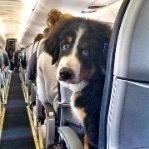
1/16 scale scratch built AT-38B Talon-The Smurf jet is back!
Christoffer Lindelav and 13 others reacted to Pete Fleischmann for a topic
Proof of life- same thing: other side. This time; however, I had to cut the panel in two pieces to get it to fit without irrecoverably crimping. I’ll fix the seam later- P14 points -
First round of wash completed (I have never fully applied a wash to a model before, and this is also the first time I have ever used a so-called 'sludge' wash before). Second round in progress. Derek14 points
-

Revell 1/32 F/A 18 F Super Hornet
F`s are my favs and 13 others reacted to chrish for a topic
I have managed to fit the vertical tails and close up the rear component, I did get a poor fit aft of the horizontal stabilizers but I'm pretty sure that's my fault as I didn't trim the exhaust turbines to fit the jet pipes, I kind of hoped I could convince it all to go together. and I've done some advance work for fitting the wings together, I have no intention of using the kit hinges, I'll simply add a piece of evergreen into the slot and glue the outer wings to the stubs, but some sanding and carving was required to get a snug fit; Thats all for today Thanks for looking14 points -
14 points
-
Hello, I've completed the cockpit and put together all the parts: almost everything is out of the box, only the instrumentation is from the Quinta Studio 3D set. Master metal parts fro AOA sensors and pitot tube. I put here and there some red Remove Before Flight tags as showed when the F-16 is parked and... to add a splash of color. In the next step I will add the underwing pylons and canopy parts... and should be finished. CIAO! Piero14 points
-
Tamiya 1/32 F-16C CAS Viper - 50th Fighting Falcon Anniversary
TankBuster and 12 others reacted to Piero for a topic
well, I finished my CAS Viper just in time before my next business trip... CIAO! Piero13 points -
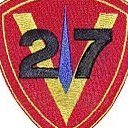
Tamiya 1/48 P-47D-16-RE
scvrobeson and 12 others reacted to D.B. Andrus for a topic
My hands haven't had the necessary strength to do the work required on the landing gear sets(presently changing for the better), however they have not been idle. Below are some quickly edited shots of the Tamiya P-47 recently completed. Not perfect, but it's an OK build. "My San Antonio Rose" P-47D-16-RE Serial Number 42-75955 310th FS, 58th FG Capt. LeeRoy M. Chadwell Flight Leader, Yellow Flight SWPA, 194413 points -
B-17G OOB build Mals Way, well that didnt happen so to say, it went down the drain.
Martinnfb and 12 others reacted to Mal_Belford for a topic
Allright then, final pics of finnished result. its done this chapter 1. as this is a whole, two morte builds for this one, reveal it later. + Sorry for micro dust lol13 points -
Once again, the rear fuselage seams get some attention, but not just by smearing putty everywhere this time. Again, more baby steps. Wish me luck.13 points
-
Revell He 111 P
The Madhatter and 11 others reacted to ScottsGT for a topic
Just wrapped this one up. I honestly did not expect it to be this big of a model until I opened the box. Had to take it outside to get pics.12 points -
1/32 Eduard (Hasegawa) P-40N Warhawk "Klawin Kitten"
Azgaron and 11 others reacted to Tolga ULGUR for a topic
Some progress Under surfaces painted I used Gunze's acrylic Neutral grey12 points -
Hasegawa 1/32 P-47D Thunderbolt
scvrobeson and 11 others reacted to spyrosjzmichos for a topic
Hi everyone! Here with another update. With the majority of work on the airframe complete I shifted my attention to the undercarriage. The gear struts were previously detailed with lead wire and flexible vinyl thread while the kit's wheel have been replaced with resin ones from Eduard. Painting was done with MRP metallics while for the tyres I used LifeColor's vulcanized rubber. A single chrome placard decal from Anyz models was applied on each strut to complete the look. All details were highlighted with a black wash. I also wanted to weather the undercarriage as if the aircraft was operating in dry dusty conditions and for that I used a combination of MRP light brown and Mig Ammo airfield dust pigments. Finally, I used black oil from Abteilung 502 for the various streaks. I followed the same approach for the smaller wheel bay covers but also tried to depict the exhaust stains using brown ink. Thanks for checking!12 points -
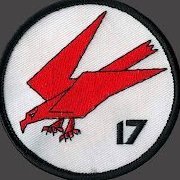
1/32 Dassault Mirage IIIs J-2336 Geronimo
TankBuster and 11 others reacted to CarstenB for a topic
As usual I started with the ejection seat, a Martin Baker Mk.3. The seat from Revell is (as almost in all kits) very basic. Only a few details and the dimensions/thickness of the seat shell are not correct at all. So I decied to build the ejection seat from scratch useing polystyrene sheets (1mm) and pimp them with the PE parts from Eduard (32859, Mirage IIIc interior). I am quite happy about it: The template was very detailed photos that I found on the Internet. Here is one of the many photos: Next, I added some more details: 1/32 rivets (from Quinita Studio) and the ejection handle, made of yellow and black painted 1mm wire fixed in the seat with two 2mm brass tubes: The intermediate result is respectable: After painting it black: I added even more details. I know, the wont be visible in the end, but I know, they are there. Next part, the seat cushions. I made them out of epoxy putty and painted them with a base color: The black seat shell got a light silver brush and the cushions the final color. At the end, I added the seatbelts from Eduard (32860, Mirage IIIc seatbelts) giving them a little twist by "haning" one of the belts on the ejection handle. Here the final results:12 points -

MDC Hawker Typhoon W/Cdr R E P Brooker
Alain Gadbois and 11 others reacted to mozart for a topic
OK, there's been enough piddling about and procrastination, time to get something done and the first step is to finalise the pilot. Having repositioned the seat he couldn't now hold the "stick" so that has been temporarily cut off. He took a couple of hours to paint using MRP water-based paints, it's a fairly rough job with not too much of an attempt to convey light and shade etc, but it works I think: Further harness straps will be added later of course. I checked my references for the helmet, mask etc.: So the oxygen tube and R/T leads will be added too. Sitting in the airframe:12 points -

Roy Cross Tribute Build: Airfix Heracles
Mal_Belford and 10 others reacted to LSP_Kevin for a topic
I've been thinking a lot about the impact that Airfix's box art had on me as a nascent modeller in my youth, and even continues to have today - not just through nostalgia, which is real enough, but also because Roy's artwork still holds up today, and still evokes all the same feelings that it did all those years ago. And with the hobby being such an important part of my life for more than 50 years now, to the extent that even when I had long stretches away from the hobby, I still considered myself a modeller, Roy's passing feels rather more significant on a personal level than it otherwise might, even though he was, for all intents and purposes, a complete stranger. To that end, I've decided to do a tribute build, featuring the only Airfix kit I have that features Roy's box art: the venerable Handley Page H.P 42 Heracles in 1/144 scale. I haven't started any work on the kit yet, but hope to shortly. I'd also like to make this a relatively quick build, so hopefully I won't get too bogged down trying to fix or improve the kit. Stay tuned! Kev11 points -

Ural 4320 Command vehicle Bulgarian Armored Forces
TankBuster and 10 others reacted to ShelbyGT500 for a topic
Hi guys, this is my last build - Ural 4320 truck, Command Vehicle served in BULAF. The model is at 1:16 scale from unknown Chinese company. It was made for RC model, but the quality is great, and adding some details it becomes of a nice scale model Also the resin figures are nice touch for the final look. Everything was primed with 1500 black primer. Painted with tamiya acrylics as always. For weathering I used oils, filters and acrylic pencils. So here it is: Thank you as always for stooping by. Cheers guys and have a nice day11 points -
1/48 CH-46 What-if
The Madhatter and 10 others reacted to Smeds for a topic
Just awaiting rotors to complete.11 points -

1/32 Revell-AIMS Spitfire PR Mk.XI
scvrobeson and 10 others reacted to mc65 for a topic
Here I am, little update. First of all, thank you all for your interest and encouraging comments. in particular to Joachim: I followed your wip, but I forgot the bulge on the wing to remove, thanks! As for the radiators, I think I'll leave the Revell ones, albeit I'm aware how little shallow they are. my aim for this project is not to go too deep into obsessive details, but to quickly assemble the kit with the strictly necessary modifications, so as to be able to play with the colors (colour) as soon as possible. just to clear the field of doubts, these are the bulges to eliminate: Matt, the resin landing gear wells fit quite well, my only concern is their size, they will affect the upper wing shoulder and marginally the cockpit, but with a bit of cutting and sewing you can figure it out out well. another thing to consider is that the landing gear, fragile in itself in the Spitfire, will have to be installed very carefully, having to mediate between the styrene legs and the resin bay. so, with John's precious advice and studying the images of the PA944, I came to the conclusion that this aircraft was born with the "G" configuration for the cameras. but it was then used with two F52 cameras pointed downwards, eliminating the housing for the upper oblique F24 camera and overpainting the relative porthole on the left side. the cameras included in the AIMS set are little jewels, I will possibly consider presenting them near the plane, perhaps on board a service Willys jeep. always with a view to simplifying and not ruining the lines of this plane, I would have decided not to install the cameras in the fuselage, but to keep all the doors closed, and even the flaps retracted. doors that must be installed whenever open or closed... so using the photo-etched parts present in the conversion set, I opened the necessary holes in the fuselage. starboard: and port side. the porthole will go here, which will end up covered by the paint, anyway. the choice to keep the doors closed also lies in the lack of desire to reduce the thickness of the fuselage, rather chubby. the front ventral porthole is in a somewhat unfortunate position, I broke the rear edge of the piece, now I will have to find a way to consolidate that area while maintaining the circular hole. next step, cockpit starting, I guess. cheers, Paolo11 points -

Supermarine Spitfire Mk1a (mid), P9386, (Kotare 32001)
Shoggz and 10 others reacted to Archimedes for a topic
‘1st July-23rd August 1940, A Flight Has Some Luck… There must have been at least 150 of them, Heinkels and Me 110 fighters and the way above showed twelve thin white pencils of smoke - the top escort, Bf-109s. The leader of their formation must have seen us a few seconds after I sighted his formation, for the Huns turned out to sea, thin trails of black smoke from their exhausts showing that they had opened their throttle wide and were on the run “ Keep an eye on those b_____ above us” I ordered. Then, as the humour of the situation struck me “My God, What a windy bunch!” We were overhauling the Huns fast and the rearguard of the 110s turned back to meet us, blocking our way to the bombers. Damn! There were at least 20 of them. The old excited feeling fluttered at the pit of my stomach…’ The first milestone for this Spitfire build has been reached and I have been able to button up the cockpit. In the last post I had done all of the basic painting and some washes and shading. The Instrument Panel was also completed. I have taken a different path to some other builds in that my instrument panel has a black Blind Flying Panel but the outer portion of the IP is in a dark reddish-claret shade. This is because the Wingleader books make clear that early Spitfires had Linatex hardboard outer panels and a metal blind flying panel.. When I looked at pictures of the IWM’as N3200 and the privately-owned P9374, both show the same black Blind Flying Panel and reddish purple surround. I know they are both restorations but their materials and colours appear to match with primary reference material. So that is what I went with. Instrument Panel of N3200 Instrument Panel of P9374 Instrument Panel of P9386 Model From there I turned my attention back to the seat as seen in the previous post.. I made an attempt to paint the seat with the molded in belts but I wasn’t happy with the results (to see how molded on seat belts should be done take a look at @Shoggz early Mk.1 build here). I disassembled the seat and replaced part B8 with B7; the alternate with no belts. A note on the fuel tank: In most builds I have seen the fuel tank is painted silver to represent aluminium. I did some research and the following came to light: Dowding took pilot safety personally having seen first-hand the horrific effects on the poor pilots who had survived bailing out of burning Spitfires and Hurricanes. He issued instructions for self sealing fuel tanks to be fitted. This resulted in the following two modifications: according to "Modifications Introduced To Spitfire MK I" as quoted in "Spitfire The History": Mod #223: Introduce Linatex covered lower fuel tank, April 25th 1940 Mod #273: Fit self sealing to lower fuel tank, July 27th 1940 P9386 was first flown on march 1st 1940 so was almost certainly not built with self sealing fuel tanks. But, it is difficult to know if P9386 had a self sealing fuel tank or not as the tanks could have been changed as a field modification by the time Brian Lane came to fly it in September 1940. Linatex from that period is generally a rusty red colour. I have not been able to find any images of a period tank nor do I know if modifications #223 and #273 were for the inside or the outside of the tank but I sprayed the fuel tank Humbrol 70. I am sure those more knowledgeable than me will correct me if I am incorrect. Let’s move on to ‘Watch Outs’: Having glued in frames 8-13 I then moved on to rigging the cockpit. I used ‘invisible mending thread’ and, whilst it is strong enough, it doesn’t bend well. this means the attachment points to the rudder pedals go in a broad loop rather than a tight one which doesn’t look right. Next time I’ll use EZ-line for this. Fortunately, once the seat is in, the loops through the rudder pedals cannot be seen. So, unless you are entering your Spitfire into a competition with judges wielding dental mirrors, don’t sweat it. P9386 Model Cockpit Rigging. Assembly of the cockpit went well (mostly) but I had an issue with one piece: the X-Brace between frames 12 and 13. I had drilled out the holes to make it look more realistic (as I did with the frames themselves). Unfortunately that makes this particular part significantly weaker and I managed to snap off one of the legs. I replaced it but you can see in the photo above what looks like a massive crack in it just now. Fortunately that will not be visible once the cockpit is closed up in the fuselage and Part E7 is on. I went ‘off piste’ versus the instructions and had left the seat off until just before closing the cockpit up. the reason for this is choosing the Eduard ‘Zoom’ belt for this build. If you are using these the order to put these in is as follows: CA glue the two over-the-shoulder parts of the harness, Thread this assembly through the armoured headrest and CA glue it to the X-Brace. CA glue the lap belts in to the seat pan. Install the seat Bring the shoulder belts down to the seat back, put the centre belt through the opening on the seat back and then CA glue the remaining parts down and button ‘er up. So, that is where I am up to. Below is a couple of quick shots of the cockpit in completed form and the fuselage taped together with the cockpit in. Next, assembly of the airframe. Kind regards, Paul11 points -

1/32 Dassault Mirage IIIs J-2336 Geronimo
Isar 30/07 and 10 others reacted to CarstenB for a topic
As I mentioned in the beginning of the thread, I was not happy at all with the scale of try number 2. Especially the intakes were completely wrong. So I decided this time to start early with the intakes and I checked whether the dimensions were correct. The intakes from the Swiss version end short before the canopy starts. See reference image: In comparison to the Italerie kit, the Revell kit is correct. BUT the first thing I noticed, the mould impressions are visible. So I filled them and sanded all irregularities. After polishing all surfaces with 2400/6000 and 8000 polish paper, I primed the entire intake with Humbrol Enamel black gloss (21). After one day drying and polishing them again with polishing compound I used ALC-119 Airframe Aluminium from Alclad II to give it the shiny appearance of polished metal. I know, it wont be visible, but it was a kind of a prototyp test for the fuselage comming later. Here the results: For the moment, I set it to the side to continue with the main and front landing gear bays.11 points -
Glossed ready for a weathering wash. Wash applied to some of the smaller parts. Derek11 points
-

Azur Bloch MB 152C.1 - Zdzislaw Henneberg, France 1940
Azgaron and 10 others reacted to R Palimaka for a topic
It now has wings...they're not attached to the fuselage yet, but it's progress. I dirtied up the wheel wells and glued them onto the wing undersides. The shell casing ejection slots were boxed in before gluing the wing halves together. I also added a small length of plastic tubing to the leading edge of the wing root just to add a little more contact area at that point. Dry fitting the halves together showed that there wasn't enough touching to make a secure join. I also had to file a bit of a trough on the wheel well insert so that the upper wing half would sit properly. It seems like there are a lot of little challenges to these kits, but until Tamiya offers 1940s French aircraft this is what we have to work with. And here is the assembled wing. I offered it up to the fuselage and can see there is going to be some filing, sanding and juggling to get them to mate up properly. I think in hindsight I probably should have glued the upper halves of the wing to the fuselage and then glued the bottom of the wing to that. I also have a small area to finish sanding and polishing smooth, and some rescribing...after someone put a glue fingerprint on the top...11 points -
OBG asks good questions. At the risk of boring some of my followers on this project, I will pontificate a bit further on this (to me) most interesting major B/C model modification - the Malcolm Hood. This is all just purely analysis of pictures I have. First - "how does the chain connect to and drive the canopy?" The canopy has a bracket on either side at its forward edge, whos function is to attach the canopy to the chain (brackets circled in red): Note the studs protruding downward from the brackets. Those studs engage a special link in each chain - circled in red: "What stops the canopy from going all the way aft and falling off the guides if you keep cranking? Is there a stop?" There are two stops, one on either side, which make contact with those brackets described above: This next picture shows the canopy cranked back fully open - I circled in red the chain-attach brackets and stops: You can see pretty clearly the brackets are either engaging the stops, or there is a small gap between the two. All this picture evidence suggests to me that for emergency egress, the canopy simply slides aft into the stops, and does not jettison itself from the airplane. The red handle somehow (I don't know how exactly) disconnects the hand crank from the chain allowing a rapid aft movement of the canopy. That is all it can do, apparently. Stand by - soon I will post progress on the fuselage tank and radio rack, and preparations for joining the LH and RH forward fuselage panels, always a milestone for any airplane build.11 points
-
Silver bits finally done! Still a long way to go, however. Next step is to mask off all the non-white areas, and give the fuselage and fin their final coats of white. I also need to finish painting the engines and installing them, along with the landing gear and doors - but not before decals! I can at least see the finish line from here, so as long as I don't screw up any of these remaining tasks too badly, it should make it. Stay tuned! Kev11 points
-

Airfix 1:24 Spitfire Mk.IX
Archimedes and 10 others reacted to Iain for a topic
Fuselage now closed up - generally excellent fit - with just a little filler along some seams - area in front of canopy has a bit of a moulded 'step' from the slide mould tooling. And a start made on the firewall/engine bearers/coolant pipes - fitting the latter takes some careful threading through the engine bearers! The bearers are just a push fit into the firewall for now - not glued: And dry fitted to the fuselage: More later in the week - perhaps... Have fun! Iain11 points -
Jet pipes painted. Derek10 points
-
Howdy folks, I've just published this week's What's New update. Enjoy! Kev10 points
-

1/32 Dassault Mirage IIIs J-2336 Geronimo
patricksparks and 9 others reacted to CarstenB for a topic
Continue with the main landing gear bay. Again, the details of the kit are rather poor. That's why I decided to improve it with the Mirage IIIc exterior accessories set from Eduard. After I had sanded down all the raised parts, attached the Eduard PE parts and assembled everything, I painted the inside first silver then yellow-green. After I light dirt and oil wash I added the rest of the PE parts, pimped it with some ANYZ connectors and wires to simulate pipes. For the moment, I'm also putting this sub-project to the side.10 points

